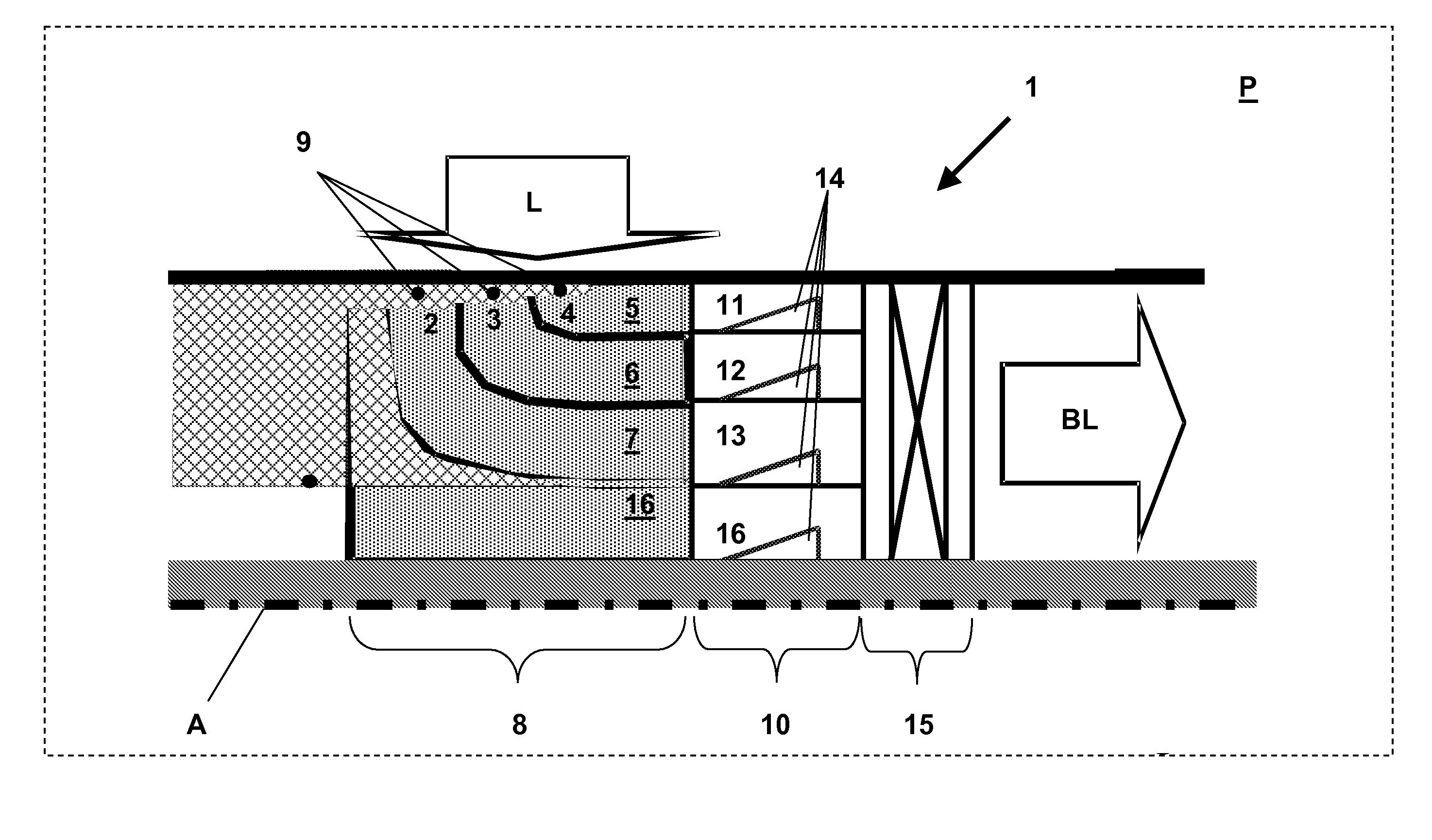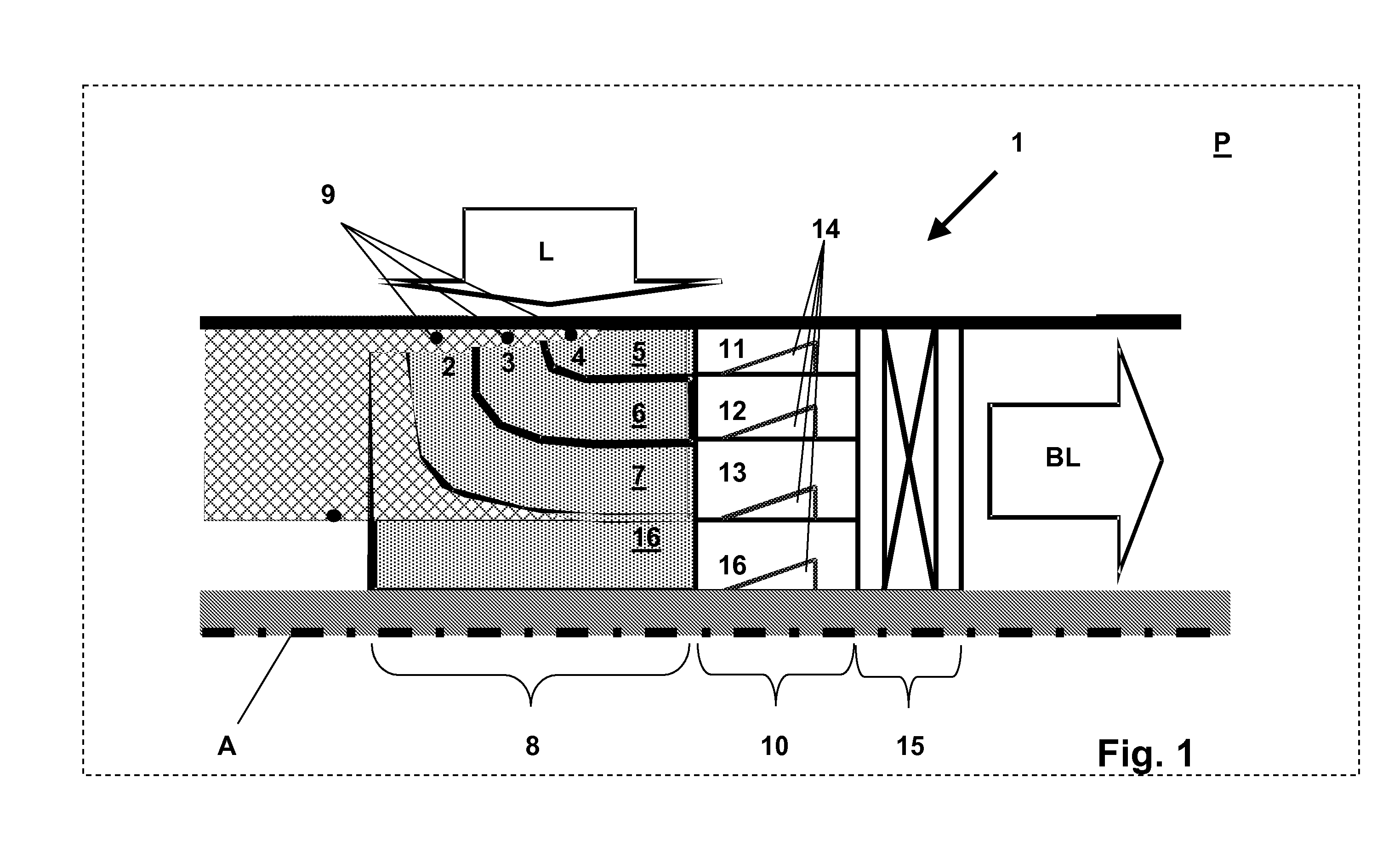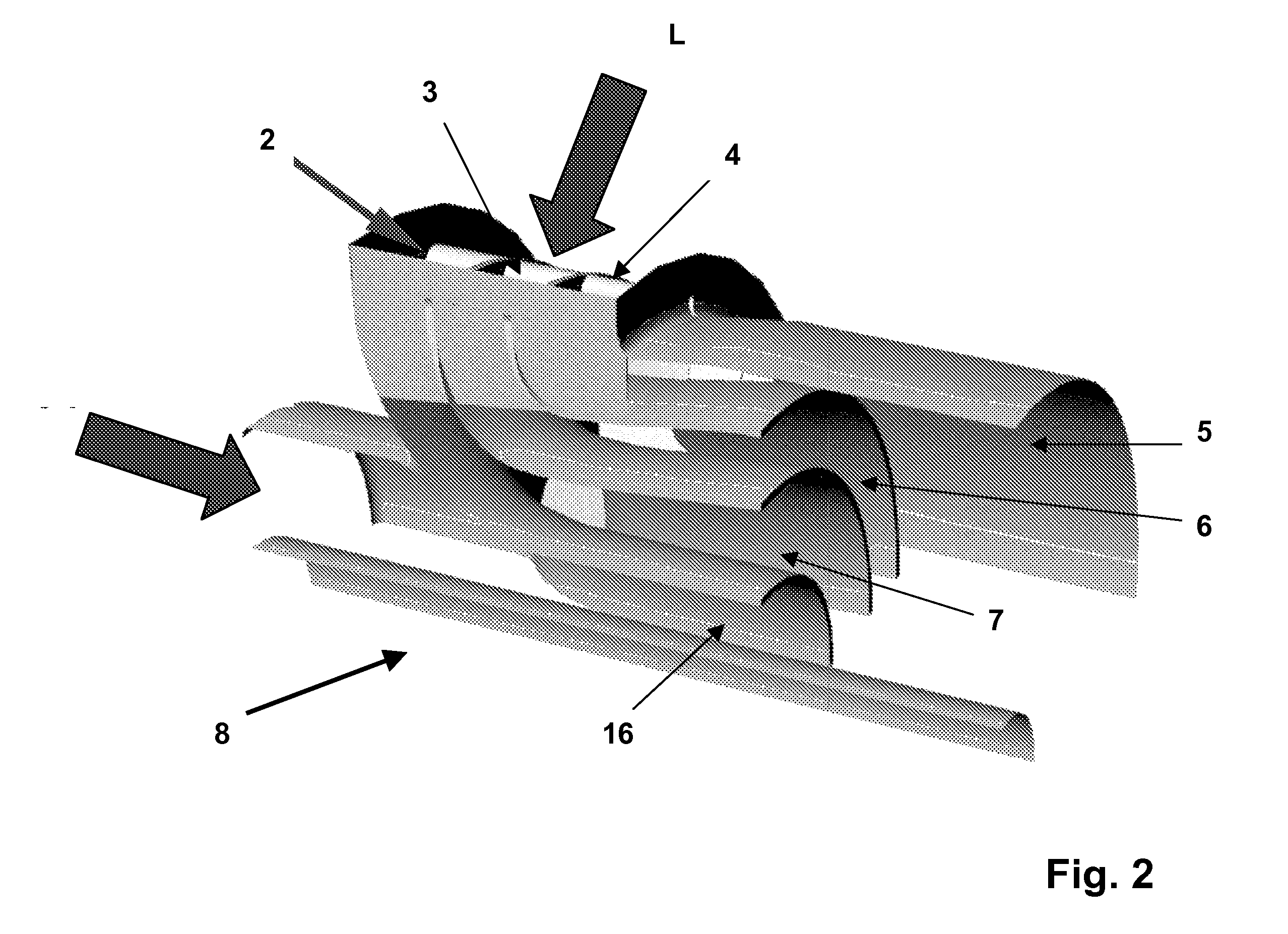[0011] One of numerous aspects of the present invention involves forming a mixer
assembly for forming a fuel-air mixture which is combinable with a burner
system of a
heat engine, especially a gas turbine plant, in such a way that producing a fuel-air mixture of high-performance gas turbine applications is possible without having to accept the aforementioned disadvantages of the prior art. It is especially advantageous to make available a large
mass flow of a fuel-air mixture, wherein during the whole mixing no flow separations, which cause pressure zones,
backflow zones, or
dead water zones, are to occur along the flow passages inside the mixer assembly. It is also advantageous to avoid any regions inside the mixer assembly in which regions of
increased risk of spontaneous ignition are formed by local fuel accumulations. Furthermore, the fuel-air mixture which is made available by the mixer assembly is preferably suitable for firing a
catalytic burner, i.e., the mixture flow advantageously has, as far as possible, a largely uniform velocity profile along the flow cross section. Finally, the mixer assembly is preferably formed as compact and small in construction as possible in order to achieve a high integratability and also the possibility of retrofittability, i.e., retrofittability to burner systems which already exist.
[0012] Another aspect of the present invention includes a method by which the efficient production of a fuel-air mixture for the operation of high performing modern
gas turbines is possible.
[0016] In order to improve the degree of mixing of the partial flows of fuel-air mixture which are formed along the flow passage sections, an alternative exemplary embodiment of the mixer assembly provides an after-mixing region which is connected downstream directly to the flow deflecting region and which has individual mixing passage sections which are connected downstream flush to the flow passage sections in each case, and in which the respective partial flows of fuel-air mixture experience a further mixing. A flow vortex generating structure, which is introduced into each mixing passage section, serves for this purpose in each case, by means of which, without pressure loss if possible, a strong swirling is induced of the partial flow which passes through the individual mixing passage sections in each case. The individual mixing passage sections have an outlet opening in each case in such a way that the partial flows which emerge from the mixing passage sections are concentrated into a spatially compactly uniform total flow which, in this form, leaves the mixer assembly. The fuel-air mixture which is produced in this way is then fed directly to a burner system, if necessary to a catalytically supported burner system.
[0017] A further exemplary embodiment, instead of the mixing passage sections which are provided with flow vortex generating structures, provides a so-called fine mixing region which is assembled from a number of individual flow passages which are arranged in each case along concentric annular sections and have flow cross sections with flow passage diameters of between 0.5 and 5 mm. Moreover, the individual flow passages per annular section are set at an
angle of incidence ±δ to the flow direction by which the fuel-air mixture leaves the flow deflecting region, i.e., all flow passages, which are located in a coaxial annular section, are arranged parallel to each other; however, the flow passage longitudinal axes between two radially adjacent annular sections are located alternately by +δ or −δ in each case, in order to create in this way, downstream of the fine mixing structure, strongly tangentially acting shear forces between the individual flow regions emerging from the annular sections, in order to optimize the degree of mixing through of the fuel-air mixture. Furthermore, the multiplicity of flow passages which are divided into the annular sections act with homogenizing effect on the flow direction, i.e., the flow which emerges from the fine mixing structure experiences a spatial flow concentration which ultimately also affects the axial velocity profile with unifying effect. A further
advantage of the fine mixing structure, moreover, is that on account of the only small flow passage cross sections in the
millimeter range and below, any risk of a backflash in the course of
quenching can be excluded by the fine mixing structure.
[0023] Methods embodying principles of the present invention enable the forming of a fuel-air mixture which propagates along a propagation axis and is homogenously mixed through over the whole flow cross section, and which, in addition, has an isokinetic flow profile which, in a preferred way, is
usable for catalytically operable burner systems. By means of the separation, according to the present invention, of the available air flow into at least two, preferably three or four partial flows, which are to be separately deflected, it is possible to effect the deflection of the partial flows largely loss free, i.e., without pressure losses and flow separations in the region of the deflecting zones so that directly downstream of the flow deflecting region each individual partial flow has an isokinetic flow profile which are formed identically to each other in each case. The following measures serve ultimately for the optimization and homogenization of the degree of mixing.
[0024] A flow deflection by a
deflection angle β of 90O has proved to be especially advantageous, especially as in this case, in a flow-through component which is formed rotationally symmetrically, an air flow which is directed radially onto the flow-through component can be deflected into an axially oriented air flow. This enables an unusually compact flow guiding inside the mixer assembly and, moreover, allows the
retrofitting to burner systems which already exist.
 Login to View More
Login to View More 


